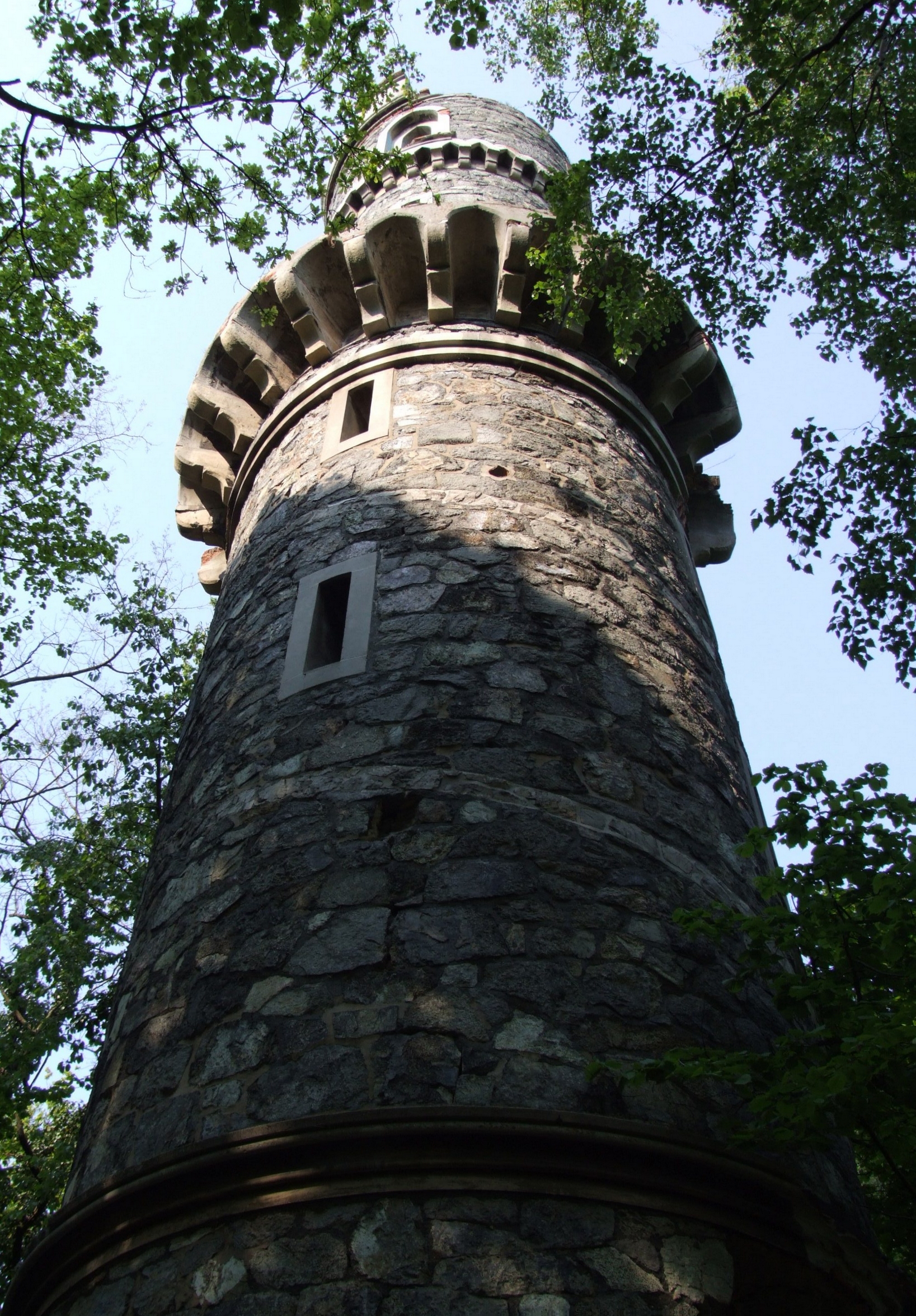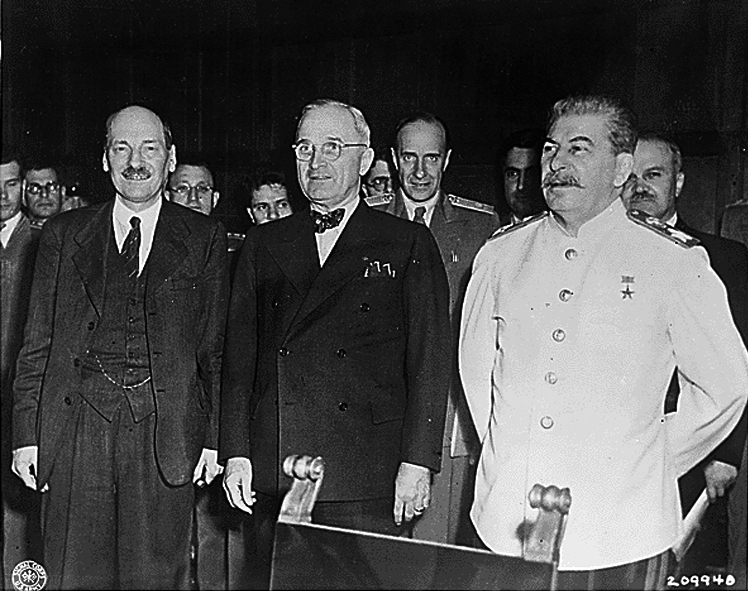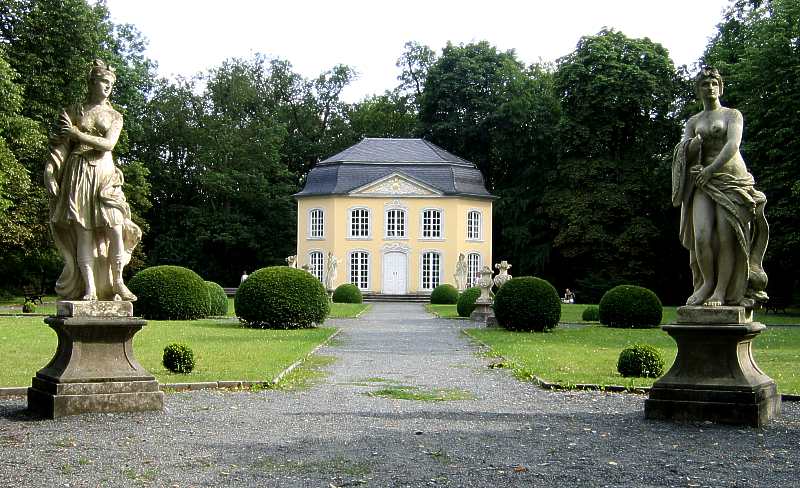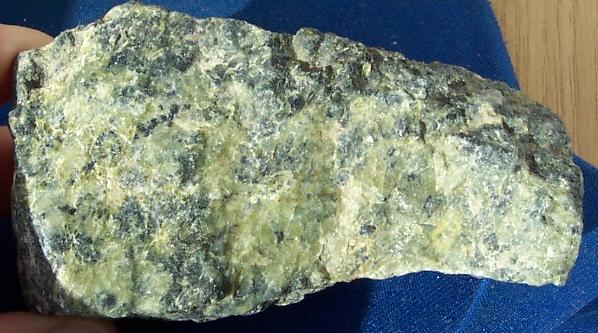|
Bismarck Tower, Janówek
The world's first Bismarck tower was erected by private initiative in 1869 in the village of Ober-Johnsdorf, Silesia, then part of Prussia (today Janówek, Wrocław County, Poland). It stands on top of the hill now called Jańska Góra (german: Johnsberg), 253 m above sea level. The tower itself is 23 m in height. History The idea of erecting a monument to Otto von Bismarck had been mooted as far back as 1863 by retired Prussian officer Friedrich Schröter (1820–1888), a wealthy landowner in nearby Wättrisch and an admirer of the Iron Chancellor. Following the Prussian victories in the Second Schleswig War (1864) and the Seven Weeks War (1866), Schröter then set about realising his plans. A site was picked for construction of the tower: the south face of Johnsberg Hill near the neighbouring village of Ober-Johnsdorf, part of which was owned by Schröter (1,100 acres). Construction began on 15 April 1869, carried out by master mason Bernhardt from Nimptsc ... [...More Info...] [...Related Items...] OR: [Wikipedia] [Google] [Baidu] |
Bismarckturm - Jańska Góra
A Bismarck tower (german: Bismarckturm) is a specific type of monument built according to a more or less standard model across Germany to honour its first chancellor, Otto von Bismarck (d. 1898). A total of 234 of these towers were inventoried by Kloss and Seele in 2007Pohlsander, Hans A. ''National Monuments and Nationalism in 19th Century Germany'', Oxford: Lang, 2008, p. 226-227 but more have been discovered since making the total around 240. These towers were built between 1869''Der älteste Bismarckturm von 1869'' at www.bismarcktuerme.de. Retrieved 28 July 2016. and 1934 and some 173 remain today. Quite a few of these towers, including all 47 based on |
Granite
Granite () is a coarse-grained (phaneritic) intrusive igneous rock composed mostly of quartz, alkali feldspar, and plagioclase. It forms from magma with a high content of silica and alkali metal oxides that slowly cools and solidifies underground. It is common in the continental crust of Earth, where it is found in igneous intrusions. These range in size from dikes only a few centimeters across to batholiths exposed over hundreds of square kilometers. Granite is typical of a larger family of ''granitic rocks'', or ''granitoids'', that are composed mostly of coarse-grained quartz and feldspars in varying proportions. These rocks are classified by the relative percentages of quartz, alkali feldspar, and plagioclase (the QAPF classification), with true granite representing granitic rocks rich in quartz and alkali feldspar. Most granitic rocks also contain mica or amphibole minerals, though a few (known as leucogranites) contain almost no dark minerals. Granite is nearly alway ... [...More Info...] [...Related Items...] OR: [Wikipedia] [Google] [Baidu] |
Monuments And Memorials In Poland
A monument is a type of structure that was explicitly created to commemorate a person or event, or which has become relevant to a social group as a part of their remembrance of historic times or cultural heritage, due to its artistic, historical, political, technical or architectural importance. Some of the first monuments were dolmens or menhirs, megalithic constructions built for religious or funerary purposes. Examples of monuments include statues, (war) memorials, historical buildings, archaeological sites, and cultural assets. If there is a public interest in its preservation, a monument can for example be listed as a UNESCO World Heritage Site. Etymology It is believed that the origin of the word "monument" comes from the Greek ''mnemosynon'' and the Latin ''moneo'', ''monere'', which means 'to remind', 'to advise' or 'to warn', however, it is also believed that the word monument originates from an Albanian word 'mani men' which in Albanian language means 'remember ... [...More Info...] [...Related Items...] OR: [Wikipedia] [Google] [Baidu] |
Bismarck Towers
A Bismarck tower (german: Bismarckturm) is a specific type of monument built according to a more or less standard model across Germany to honour its first chancellor, Otto von Bismarck (d. 1898). A total of 234 of these towers were inventoried by Kloss and Seele in 2007Pohlsander, Hans A. ''National Monuments and Nationalism in 19th Century Germany'', Oxford: Lang, 2008, p. 226-227 but more have been discovered since making the total around 240. These towers were built between 1869''Der älteste Bismarckturm von 1869'' at www.bismarcktuerme.de. Retrieved 28 July 2016. and 1934 and some 173 remain today. Quite a few of these towers, including all 47 based on |
Prussian Cultural Sites
Prussia, , Old Prussian: ''Prūsa'' or ''Prūsija'' was a German state on the southeast coast of the Baltic Sea. It formed the German Empire under Prussian rule when it united the German states in 1871. It was ''de facto'' dissolved by an emergency decree transferring powers of the Prussian government to German Chancellor Franz von Papen in 1932 and ''de jure'' by an Allied decree in 1947. For centuries, the House of Hohenzollern ruled Prussia, expanding its size with the Prussian Army. Prussia, with its capital at Königsberg and then, when it became the Kingdom of Prussia in 1701, Berlin, decisively shaped the history of Germany. In 1871, Prussian Minister-President Otto von Bismarck united most German principalities into the German Empire under his leadership, although this was considered to be a "Lesser Germany" because Austria and Switzerland were not included. In November 1918, the monarchies were abolished and the nobility lost its political power during the German R ... [...More Info...] [...Related Items...] OR: [Wikipedia] [Google] [Baidu] |
Expulsion Of Germans From Poland
The flight and expulsion of Germans from Poland was the largest of a series of flights and expulsions of Germans in Europe during and after World War II. The German population fled or was expelled from all regions which are currently within the territorial boundaries of Poland, including the former eastern territories of Germany annexed by Poland after the war and parts of pre-war Poland. West German government figures of those evacuated, migrated, or expelled by 1950 totaled 8,030,000 (6,981,000 from the former eastern territories of Germany; 290,800 from Danzig, 688,000 from pre-war Poland and 170,000 Baltic Germans resettled in Poland during the war). Research by the West German government put the figure of Germans emigrating from Poland from 1951 to 1982 at 894,000; they are also considered expellees under German Federal Expellee Law. The German population east of Oder-Neisse was estimated at over 11 million in early 1945. The first mass flight of Germans followed the ... [...More Info...] [...Related Items...] OR: [Wikipedia] [Google] [Baidu] |
Potsdam Agreement
The Potsdam Agreement (german: Potsdamer Abkommen) was the agreement between three of the Allies of World War II: the United Kingdom, the United States, and the Soviet Union on 1 August 1945. A product of the Potsdam Conference, it concerned the military occupation and reconstruction of Germany, its border, and the entire European Theatre of War territory. It also addressed Germany's demilitarisation, reparations, the prosecution of war criminals and the Flight and expulsion of Germans (1944–1950), mass expulsion of ethnic Germans from various parts of Europe. Executed as a communiqué, the agreement was not a peace treaty according to international law, although it created accomplished facts. It was superseded by the Treaty on the Final Settlement with Respect to Germany signed on 12 September 1990. As De Gaulle had not been invited to the Conference, the French resisted implementing the Potsdam Agreements within their occupation zone. In particular, the French refused to ... [...More Info...] [...Related Items...] OR: [Wikipedia] [Google] [Baidu] |
World War II
World War II or the Second World War, often abbreviated as WWII or WW2, was a world war that lasted from 1939 to 1945. It involved the vast majority of the world's countries—including all of the great powers—forming two opposing military alliances: the Allies and the Axis powers. World War II was a total war that directly involved more than 100 million personnel from more than 30 countries. The major participants in the war threw their entire economic, industrial, and scientific capabilities behind the war effort, blurring the distinction between civilian and military resources. Aircraft played a major role in the conflict, enabling the strategic bombing of population centres and deploying the only two nuclear weapons ever used in war. World War II was by far the deadliest conflict in human history; it resulted in 70 to 85 million fatalities, mostly among civilians. Tens of millions died due to genocides (including the Holocaust), starvation, ma ... [...More Info...] [...Related Items...] OR: [Wikipedia] [Google] [Baidu] |
Pavilion
In architecture, ''pavilion'' has several meanings: * It may be a subsidiary building that is either positioned separately or as an attachment to a main building. Often it is associated with pleasure. In palaces and traditional mansions of Asia, there may be pavilions that are either freestanding or connected by covered walkways, as in the Forbidden City ( Chinese pavilions), Topkapi Palace in Istanbul, and in Mughal buildings like the Red Fort. * As part of a large palace, pavilions may be symmetrically placed building ''blocks'' that flank (appear to join) a main building block or the outer ends of wings extending from both sides of a central building block, the ''corps de logis''. Such configurations provide an emphatic visual termination to the composition of a large building, akin to bookends. The word is from French (Old French ) and it meant a small palace, from Latin (accusative of ). In Late Latin and Old French, it meant both ‘butterfly’ and ‘tent’, becaus ... [...More Info...] [...Related Items...] OR: [Wikipedia] [Google] [Baidu] |
Unification Of Germany
The unification of Germany (, ) was the process of building the modern German nation state with federalism, federal features based on the concept of Lesser Germany (one without multinational Austria), which commenced on 18 August 1866 with adoption of the North German Confederation Treaty establishing the North German Confederation, initially a Kingdom of Prussia, Prussian-dominated military alliance which was subsequently deepened through adoption of the North German Constitution. The process symbolically concluded with the ceremonial proclamation of the German Empire on 18 January 1871 celebrated later as the customary date of the German Empire's foundation, although the legally meaningful events relevant to the accomplishment of unification occured on 1 January 1871 (Constitution of the German Confederation (1871), accession of South German states and constitutional adoption of the name German Empire) and 4 May 1871 (entry into force of the permanent Constitution of the Germ ... [...More Info...] [...Related Items...] OR: [Wikipedia] [Google] [Baidu] |
Sandstone
Sandstone is a clastic sedimentary rock composed mainly of sand-sized (0.0625 to 2 mm) silicate grains. Sandstones comprise about 20–25% of all sedimentary rocks. Most sandstone is composed of quartz or feldspar (both silicates) because they are the most resistant minerals to weathering processes at the Earth's surface. Like uncemented sand, sandstone may be any color due to impurities within the minerals, but the most common colors are tan, brown, yellow, red, grey, pink, white, and black. Since sandstone beds often form highly visible cliffs and other topographic features, certain colors of sandstone have been strongly identified with certain regions. Rock formations that are primarily composed of sandstone usually allow the percolation of water and other fluids and are porous enough to store large quantities, making them valuable aquifers and petroleum reservoirs. Quartz-bearing sandstone can be changed into quartzite through metamorphism, usually related to ... [...More Info...] [...Related Items...] OR: [Wikipedia] [Google] [Baidu] |
Serpentine Group
Serpentine subgroup (part of the kaolinite-serpentine group in the category of phyllosilicates) are greenish, brownish, or spotted minerals commonly found in serpentinite. They are used as a source of magnesium and asbestos, and as decorative stone. The name comes from the greenish colour and smooth or scaly appearance from the Latin , meaning "serpent rock". Serpentine subgroup is a set of common rock-forming hydrous magnesium iron phyllosilicate () minerals, resulting from the metamorphism of the minerals that are contained in mafic to ultramafic rocks. They may contain minor amounts of other elements including chromium, manganese, cobalt or nickel. In mineralogy and gemology, serpentine may refer to any of the 20 varieties belonging to the serpentine subgroup. Owing to admixture, these varieties are not always easy to individualize, and distinctions are not usually made. There are three important mineral polymorphs of serpentine: antigorite, lizardite and chrysotile. Serpen ... [...More Info...] [...Related Items...] OR: [Wikipedia] [Google] [Baidu] |








Saunders_Quarry-1.jpg)
